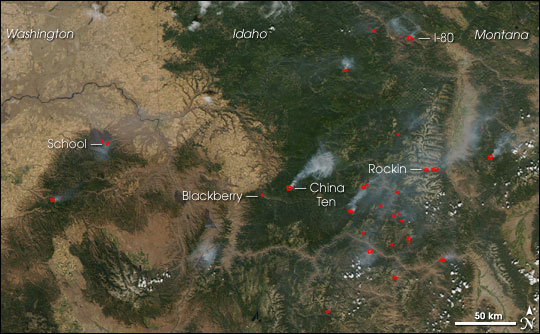
We’ve discussed in various places grassland ecology and disturbance events, let’s delve into fire.
Fire ecology is the study of how fire interacts with and affects ecosystems. Fire is a natural and necessary component of many ecosystems, playing a critical role in shaping the landscape and shaping the distribution and abundance of plant and animal species. However, the effects of fire can be complex and far-reaching, impacting everything from the soil to the atmosphere.
One of the most significant effects of fire on an ecosystem is its ability to reset the ecological clock of succession. Succession is the process by which a landscape changes over time, as different plant and animal communities establish and mature. Fire can have a major impact on succession by removing the existing plant and animal community and allowing for new growth and colonization. This can be seen in the way fire creates a mosaic of different age classes in a forest, with some areas that have recently burned and are dominated by young growth, and others that have not burned for many years and are dominated by mature growth.
Another important aspect of fire ecology is the way it shapes plant communities. Plants have developed a variety of adaptation mechanisms to survive fire, such as thick bark, underground storage organs, and the ability to resprout from underground roots. These adaptations allow some plants to survive fire and quickly regrow, while others are killed or severely damaged. This leads to a shift in the composition of plant communities, with fire-adapted species becoming more dominant in the landscape.
Historically, human use of fire has played a significant role in shaping ecosystems. Neolithic burning practices, such as controlled burns, were used to clear land for agriculture, hunting, and other purposes. These practices had a major impact on the distribution and abundance of plant and animal species. This is still evident today as many of the forests around the world are shaped by traditional burning practices.
In modern times, fire management has become an important tool for conserving ecosystems. Fire management practices, such as controlled burns and prescribed fires, are used to mimic the natural effects of fire and maintain the health and diversity of ecosystems. These practices can help to reduce the risk of large, destructive wildfires and promote the growth of fire-adapted species.
However, fire management practices can also have negative consequences if not done correctly. In many cases, fires that occur outside of the natural fire regime can have a severe impact on biodiversity and ecosystem services. This is because the intensity, frequency, and seasonality of fire may not match the natural conditions of the ecosystem.
In conclusion, fire ecology is a complex field that deals with the interactions between fire and ecosystems. Fire plays a critical role in shaping the landscape and shaping the distribution and abundance of plant and animal species. The effects of fire can be complex and far-reaching, impacting everything from the soil to the atmosphere. Plant adaptation mechanisms, such as thick bark, underground storage organs, and the ability to resprout from underground roots, allow some plants to survive fire and quickly regrow. Historically, human use of fire has played a significant role in shaping ecosystems, Neolithic burning practices, such as controlled burns, were used to clear land for agriculture, hunting, and other purposes. Today, fire management practices, such as controlled burns and prescribed fires, are used to mimic the natural effects of fire and maintain the health and diversity of ecosystems. However, fire management practices can also have negative consequences if not done correctly.
This is one you really want to get right. Fire is a sacred, beautiful, powerful force.